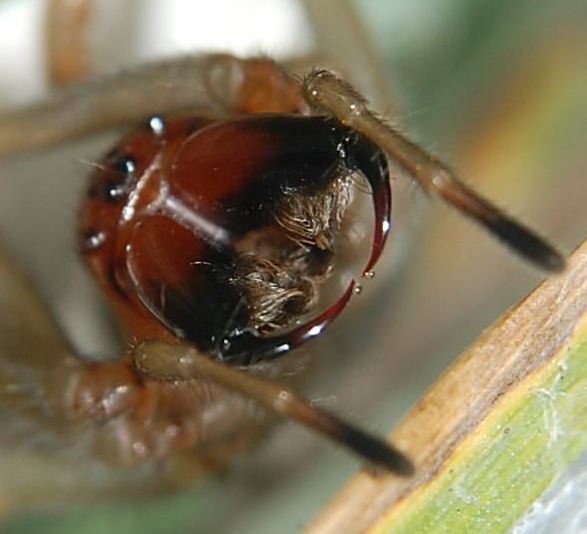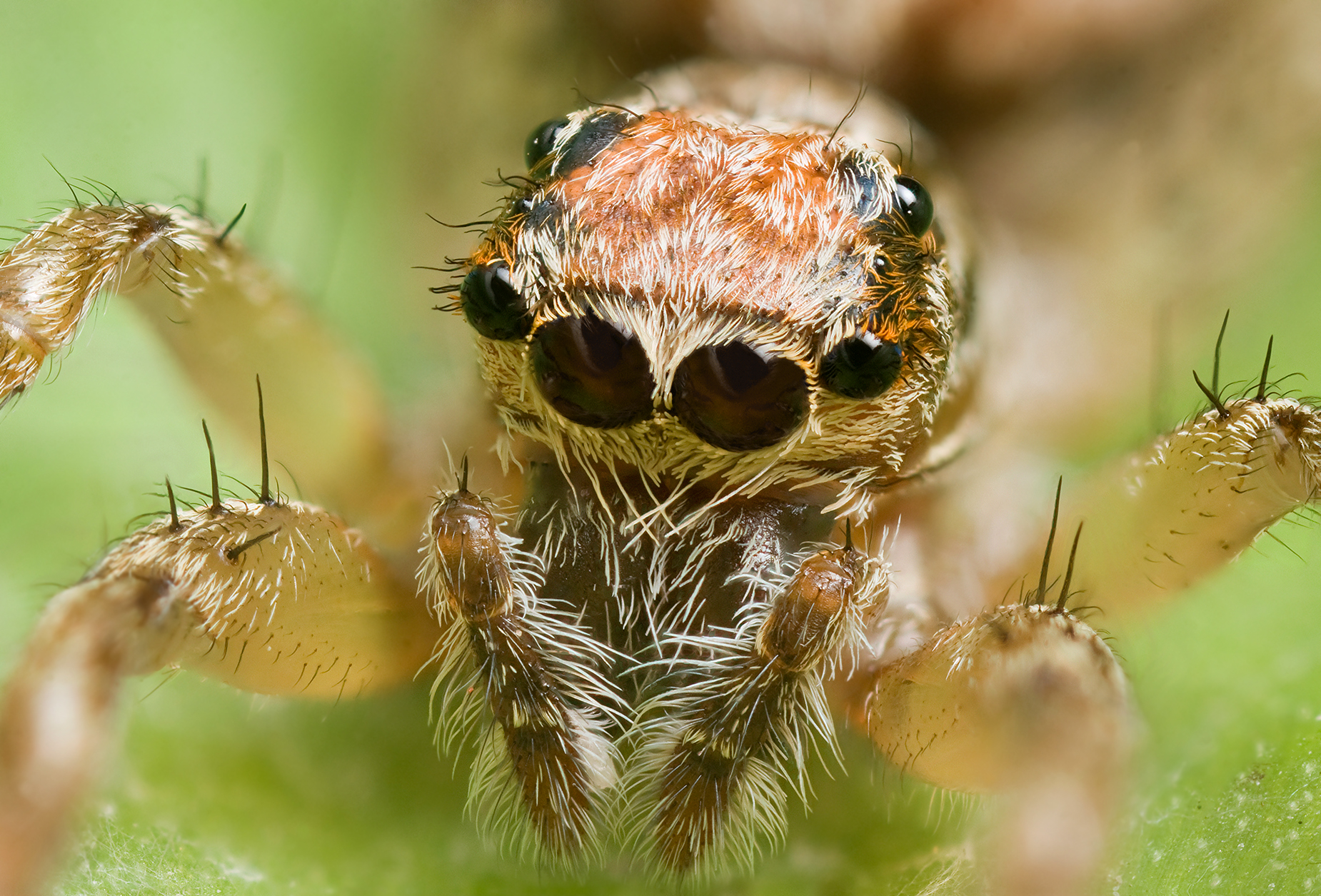|
Argiope Bruennichii
''Argiope bruennichi'' (wasp spider) is a species of orb-web spider distributed throughout central Europe, northern Europe, north Africa, parts of Asia, and the Azores archipelago. Like many other members of the genus '' Argiope'' (including St Andrew's Cross spiders), it has striking yellow and black markings on its abdomen. Web The spider builds a spiral orb web at dawn or dusk, commonly in long grass a little above ground level, taking approximately an hour. The prominent zigzag shape called the '' stabilimentum'', or web decoration, featured at the centre of the orb is of uncertain function, but it has been shown that webs containing stabilimenta catch fewer insects because they are less cryptic, but on the other hand these webs are less often damaged by birds flying through them. When a prey item is first caught in the web, ''Argiope bruennichi'' will quickly immobilise its prey by wrapping it in silk. The prey is then bitten and then injected with a paralysing venom and ... [...More Info...] [...Related Items...] OR: [Wikipedia] [Google] [Baidu] |
Giovanni Antonio Scopoli
Giovanni Antonio Scopoli (sometimes Latinisation of names, Latinized as Johannes Antonius Scopolius) (3 June 1723 – 8 May 1788) was an Italian physician and natural history, naturalist. His biographer Otto Guglia named him the "first anational European" and the "Carl Linnaeus, Linnaeus of the Austrian Empire". Biography Scopoli was born at Cavalese in the Val di Fiemme, belonging to the Prince-Bishopric of Trent, Bishopric of Trent (today's Trentino), son of Francesco Antonio, military commissioner, and Claudia Caterina Gramola (1699-1791), painter from a patrician family from Trentino. He obtained a degree in medicine at University of Innsbruck, and practiced as a doctor in Cavalese and Venice.Newton, Alfred 1881. ''Scopoli's ornithological papers.'' The Willoughby SocietyScanned version/ref> Much of his time was spent in the Alps, Plant collecting, collecting plants and Entomology, insects, of which he made outstanding collections. He spent two years as private secretary to ... [...More Info...] [...Related Items...] OR: [Wikipedia] [Google] [Baidu] |
Mating Plug
A mating plug, also known as a copulation plug, sperm plug, vaginal plug, or sphragis (Latin, from Greek σφραγίς ''sphragis'', "a seal"), is gelatinous secretion used in the mating of some species. It is deposited by a male into a female genital tract, such as the vagina, and later hardens into a plug or glues the tract together. While females can expel the plugs afterwards, the male's sperm still gets a time advantage in getting to the egg, which is often the deciding factor in fertilization. The mating plug plays an important role in sperm competition and may serve as an alternative and more advantageous strategy to active mate guarding. In some species, such a passive mate-guarding strategy may reduce selection on large male size. Such a strategy may be advantageous because it would allow a male to increase reproductive success by spending more time pursuing new female mates rather than active mate guarding. Composition The mating plug of the ''Bombus terrestris'' was c ... [...More Info...] [...Related Items...] OR: [Wikipedia] [Google] [Baidu] |
Spiders Of Europe
Spiders ( order Araneae) are air-breathing arthropods that have eight legs, chelicerae with fangs generally able to inject venom, and spinnerets that extrude silk. They are the largest order of arachnids and rank seventh in total species diversity among all orders of organisms. Spiders are found worldwide on every continent except for Antarctica, and have become established in nearly every land habitat. , 50,356 spider species in 132 families have been recorded by taxonomists. However, there has been debate among scientists about how families should be classified, with over 20 different classifications proposed since 1900. Anatomically, spiders (as with all arachnids) differ from other arthropods in that the usual body segments are fused into two tagmata, the cephalothorax or prosoma, and the opisthosoma, or abdomen, and joined by a small, cylindrical pedicel, however, as there is currently neither paleontological nor embryological evidence that spiders ever had a separate t ... [...More Info...] [...Related Items...] OR: [Wikipedia] [Google] [Baidu] |
Spiders Of Asia
Spiders (order (biology), order Araneae) are air-breathing arthropods that have eight legs, chelicerae with fangs generally able to inject venom, and spinnerets that extrude spider silk, silk. They are the largest order of arachnids and rank seventh in total species diversity among all Order (biology), orders of organisms. Spiders are found worldwide on every continent except for Antarctica, and have become established in nearly every land habitat. , 50,356 spider species in 132 Family (biology), families have been recorded by Taxonomy (biology), taxonomists. However, there has been debate among scientists about how families should be classified, with over 20 different classifications proposed since 1900. Anatomically, spiders (as with all arachnids) differ from other arthropods in that the usual body segmentation (biology), segments are fused into two Tagma (biology), tagmata, the cephalothorax or prosoma, and the opisthosoma, or abdomen, and joined by a small, cylindrical Gl ... [...More Info...] [...Related Items...] OR: [Wikipedia] [Google] [Baidu] |
Spiders Of Africa
Spiders ( order Araneae) are air-breathing arthropods that have eight legs, chelicerae with fangs generally able to inject venom, and spinnerets that extrude silk. They are the largest order of arachnids and rank seventh in total species diversity among all orders of organisms. Spiders are found worldwide on every continent except for Antarctica, and have become established in nearly every land habitat. , 50,356 spider species in 132 families have been recorded by taxonomists. However, there has been debate among scientists about how families should be classified, with over 20 different classifications proposed since 1900. Anatomically, spiders (as with all arachnids) differ from other arthropods in that the usual body segments are fused into two tagmata, the cephalothorax or prosoma, and the opisthosoma, or abdomen, and joined by a small, cylindrical pedicel, however, as there is currently neither paleontological nor embryological evidence that spiders ever had a separate t ... [...More Info...] [...Related Items...] OR: [Wikipedia] [Google] [Baidu] |
Spiders Described In 1772
Spiders ( order Araneae) are air-breathing arthropods that have eight legs, chelicerae with fangs generally able to inject venom, and spinnerets that extrude silk. They are the largest order of arachnids and rank seventh in total species diversity among all orders of organisms. Spiders are found worldwide on every continent except for Antarctica, and have become established in nearly every land habitat. , 50,356 spider species in 132 families have been recorded by taxonomists. However, there has been debate among scientists about how families should be classified, with over 20 different classifications proposed since 1900. Anatomically, spiders (as with all arachnids) differ from other arthropods in that the usual body segments are fused into two tagmata, the cephalothorax or prosoma, and the opisthosoma, or abdomen, and joined by a small, cylindrical pedicel, however, as there is currently neither paleontological nor embryological evidence that spiders ever had a separate t ... [...More Info...] [...Related Items...] OR: [Wikipedia] [Google] [Baidu] |
Cosmopolitan Spiders
Cosmopolitan may refer to: Food and drink * Cosmopolitan (cocktail), also known as a "Cosmo" History * Rootless cosmopolitan, a Soviet derogatory epithet during Joseph Stalin's anti-Semitic campaign of 1949–1953 Hotels and resorts * Cosmopolitan of Las Vegas, a luxury resort casino and hotel in Las Vegas, Nevada, which opened in December 2010 * Cosmopolitan Hotel in Hong Kong Internationalism * World citizen, one who eschews traditional geopolitical divisions derived from national citizenship * Cosmopolitanism, the idea that all of humanity belongs to a single moral community * Cosmopolitan localism, a way of linking local communities in global networks that bring production and consumption closer together Media * ''Cosmopolitan'' (magazine), a magazine for women, sometimes referred to as "''Cosmo''" * ''Cosmopolitan'' (film), a 2003 film starring Roshan Seth * Cosmopolitan Television, a satellite/cable television channel * Cosmopolitan Productions, a defunct United States ... [...More Info...] [...Related Items...] OR: [Wikipedia] [Google] [Baidu] |
Biological Sciences
Biology is the scientific study of life. It is a natural science with a broad scope but has several unifying themes that tie it together as a single, coherent field. For instance, all organisms are made up of cells that process hereditary information encoded in genes, which can be transmitted to future generations. Another major theme is evolution, which explains the unity and diversity of life. Energy processing is also important to life as it allows organisms to move, grow, and reproduce. Finally, all organisms are able to regulate their own internal environments. Biologists are able to study life at multiple levels of organization, from the molecular biology of a cell to the anatomy and physiology of plants and animals, and evolution of populations.Based on definition from: Hence, there are multiple subdisciplines within biology, each defined by the nature of their research questions and the tools that they use. Like other scientists, biologists use t ... [...More Info...] [...Related Items...] OR: [Wikipedia] [Google] [Baidu] |




